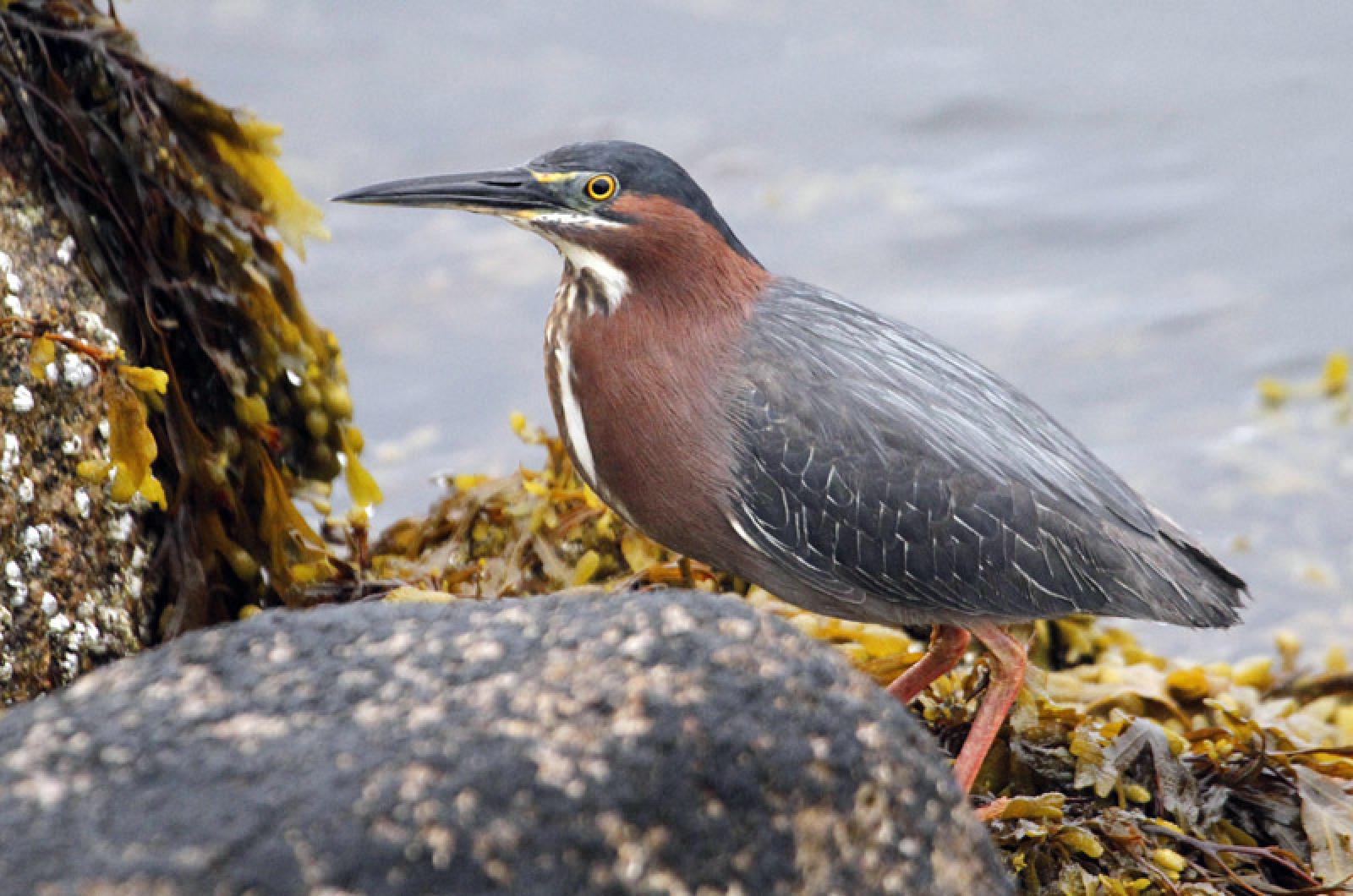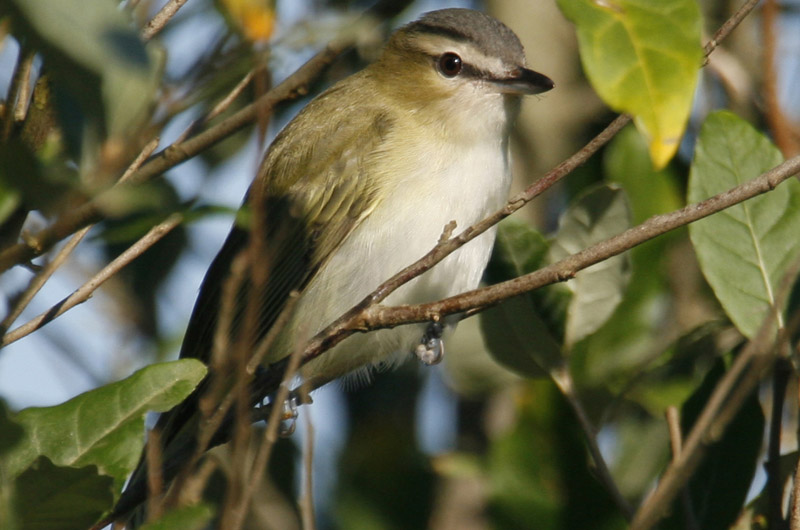Carolina wrens were scarce in the Martha’s Vineyard Breeding Bird Survey, conducted on June 7 by Matt Pelikan. This rigorous survey confirms what we had expected; mortality due to the recent severe winter has greatly decreased the population of this non-migratory species.
The breeding bird survey is an annual event sponsored by the U.S. Fish and Wildlife Service, consisting of 50 stops at approximately 0.5 mile intervals, with an observer counting all the birds seen and heard within a three-minute period at each stop. The Vineyard’s route was started by Vern Laux in 1996, and has been run annually since 2000.
Highlights of this year’s survey include spotting a brown thrasher on Lighthouse Road in Aquinnah, a first for the 13 years that Mr. Pelikan has been conducting this survey. He also observed blue-winged warblers at three stops. This species used to be a rare breeder here. His six American redstarts are a new high. And catbirds were found at almost every stop. He detected a total of 68 catbirds, which he feels is an underestimate of the true population of the areas visited.
At the other extreme, he did not find either scarlet tanagers or indigo buntings. The former usually has one or two sightings, and we had so many indigo buntings around this spring that it is somewhat surprising that they were not detected on this survey. Nor have any buntings been seen in over a month, so they are not present during this breeding season. He also noted that song sparrows were less common than anticipated, with only 19 individuals detected.
These surveys are conducted in more than 4,100 locations across North America, and the combined data is used to document regional and national population changes. Among the many findings, these surveys have documented that more species are declining than are increasing. There are 33 common birds that have declined by more than 50 per cent in the past 40 years, including species that nest (or used to nest) on the Vineyard: northern bobwhite, herring gull, yellow-billed cuckoo, short-eared owl, chimney swift, horned lark, bank swallow, field sparrow, grasshopper sparrow, eastern meadowlark and common grackle.
These are far from the only species that are less abundant now. The wood thrush has declined by almost 50 per cent in that time span. And the cerulean warbler has a current population that is only 12 per cent of what it was in 1966! No wonder that we think that birds are more scarce now than they were 40 years ago.
Bird Sightings
On June 8, Lanny McDowell observed two lesser black-backed gulls on Norton Point. This species now appears to be fairly regularly observed along the south shore, although it is certainly not very common and does not nest here.
More common are the green herons. Soo Whiting reports observing one on June 9 at Tisbury Great Pond. This species can also be found at many of our smaller ponds as well. Its call, a distinctive kyeun (okay, you try to describe it), often given when the bird is in flight, is usually heard before it is seen.
Piping plover chicks are out and about. Lanny McDowell observed some chicks in Aquinnah on June 11, and Chris Daly observed an adult with two chicks at Philbin Beach on June 14. The chicks that have already hatched will fledge in early July, finishing their reproductive season. It is imperative to protect these chicks until they fledge or are able to fly. Otherwise, the adults may re-nest, extending the breeding season well into August.
Lanny McDowell observed a one year old “portlandica” least tern on June 11. We seem to get a few of these not-yet-adult birds every spring, with their characteristic dark bar on their wing. The fledged chicks born this year will have a similar plumage, as will the larger common terns.
Karen Mead has been out birding a bit in Aquinnah during the past week and reports the following: Baltimore oriole, three ruby-throated hummingbirds, two common yellowthroats, four yellow warblers, eight cedar waxwings, American goldfinch, house finch, mourning dove, red-winged blackbirds, catbirds, song sparrow, great crested flycatcher, eastern towhee, three barn swallow nests, a great egret and three mute swans.
A screech owl was heard at 8 a.m. near Happy and Steve Spongberg’s house on June 12. It is unusual to hear them calling that “late” into the day, almost four hours after it starts to get light. And that day they also found wood thrushes and scarlet tanagers at Fulling Mill Brook.
JoAnn Eccher found a black-and-white warbler in their Aquinnah backyard. It was frequently gleaning insects in her oak and peach trees. Two of them were observed a day later.
A common grackle with a white shoulder patch and a “splendidly white striped tail,” is how Sharon Pearson described a leucistic grackle at her feeder on June 13.
My Saturday morning guided birding tour went to Great Rock Bight on June 13. Our highlights included ovenbird and red-eyed vireo, which were everywhere! But it was also eerily quiet there, as the other species that usually are abundant, noisy and easy to find were scarce. There was only one redstart and there were no great crested flycatchers, eastern wood-pewees or cedar waxwings. The Acadian flycatchers, a southern species that was present for several summers near the boardwalk on the universal access trail, were also absent.
And finally, at long last, it is raining. Three quarters of an inch of rain had fallen on June 15, as I wrote this column. This was more precipitation than we had in all of May and June. This does not end the drought, though. We still need more rain.
There are lots of birds around, so please get out looking for them, and be sure to report your bird sightings to birds@mvgazette.com.
Robert Culbert leads Saturday morning guided birding tours and is an ecological consultant living in Vineyard Haven.






Comments (1)
Comments
Comment policy »